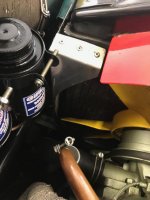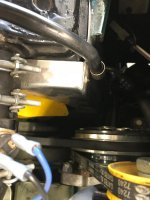Hi All,
Keep in mind that the sleeve thermostat closes off the bypass when fully open and the bypass, if left opened, would divert as much as 25% of the coolant from passing through the radiator. This loss of radiator-cooled fluid would increase the operating temperature of the engine and create the potential for overheating.
Now consider a thermostat starts to open at its rated temperature and is fully opened at approximately 15-20 deg. F or so above its rating. Assuming the same holds true for falling temperatures, the thermostat would begin to close when the coolant temperature fell to its rated temperature and begin to open the bypass. At about 15 deg. F below the rated temperature, the thermostat will be fully closed and bypass fully opened.
Now, based upon these understandings, choosing a 160 F sleeved thermostat, over a 180 deg. F thermostat, the engine should warm to 160 F when the thermostat begins to open and is fully open at around 175-180 deg. F. As engine operating temperature increases in traffic on a hot day, starting at a lower full coolant flow temperature should provide greater time and resistance against overheating. Additionally, should modifications to the cooling system prove successful enough to cause coolant temperatures to fall below the rating of the thermostat, a minimum operating temperature would of 160 deg. F would be aggressively maintained by the closing of the thermostat and opening of the bypass.
Since an optimal operating temperature of a Healey engine should be at around 195 deg. F or so, the choice of a 180 F thermostat should be just fine for summer driving. However, our cooling systems suffer from period engineering issues and would require major engine compartment redesign to overcome. Yes, a number of smaller modifications can achieve some cooling benefits, however, we are still trying to overcome original design issues caused by misdirected, uncontrolled cooling air input and escape flows. along with the often forgotten engine coolant bypass.
So, is Tahoe Healey's unmodified cooling system experience unique. I would say if not unique, uncommon, as I haven't had a similar experience even when my Healey was brand new.
Just my thoughts,
Ray(64BJ8P1)
 Hi Guest!
Hi Guest!


 smilie in place of the real @
smilie in place of the real @
 Pretty Please - add it to our Events forum(s) and add to the calendar! >>
Pretty Please - add it to our Events forum(s) and add to the calendar! >> 


